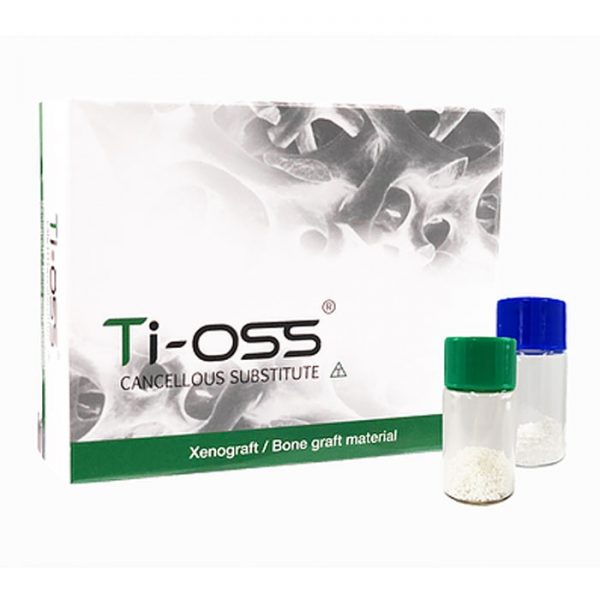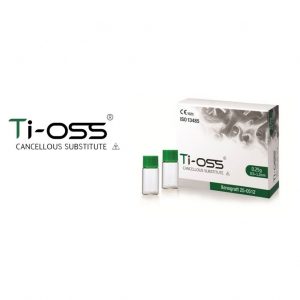Description
Features
Ti-oss® is made from 100% cancellous bone without any cortical portion. Innovative pulverizing technique allows multiporous structure, maximizing blood vessel ingrowth.
Average Ti-oss® pore size is more than three times of other world-leading product. This advanced manufacturing technique permits rapid absorption of blood or saline into the block
Low-temperature processing technique allows ideal, natural surface topography, the same as human bone, stimulating osteoblast activity. Vitrification phenomenon caused by high-temperature process has been completely controlled.
Pre HA structure, octacalcium phosphate crystal is found on the surface of Ti-oss®, resulting in fast bone formation
Unique 100% multiporous cancellous nature offers higher quantitative mass volume per gram unit, compared to other nonporous product. This leads to less material cost.
Ti-oss Details

Usage
STEP 1: Remove any soft tissue or granulation tissue carefully and expose fresh bone.
STEP 2: Saturate Ti-oss® with patient’s blood or normal saline or PRP (platelet-rich plasma.) Avoid distilled water.
Fill the defect site with prepared Ti-oss® mixture with sterilized spatula or surgical spoon.
STEP 3: Protect the graft mass with membrane or PRF (platelet-rich fibrin.)
STEP 4: Tie up the wound carefully. Exposure to oral cavity may collect oral micro-organism, resulting in infection.
INDICATIONS
Bone regeneration and augmentation
-
Alveolar ridge defect
-
Extraction defect
-
Sinus augmentation
-
Periodontal defect
ATTENTION
-
Avoid pressure on Ti-oss® particle to maintain multiporous nature. Breaking down of Ti-oss® to tiny pieces drops down the best advantages of Ti-oss®.
CONTRAINDICATIONS
Following groups are not recommended to use Ti-oss®
-
Osteomyelitis patient
-
Generalized or Localized Blood dyscrasia patient
-
Heavy smokers
-
Radiation therapy patient
-
Diabetes
-
Advanced Liver or Kidney disease
-
Thyroidism etc.
PRECAUTIONS
-
Effect on pediatric patients is not known
-
Do not overfill defects
-
Do not leave defect open
-
Store at the temperature range of 4-30°C [39.2-86°F]
-
Do not compromise blood supply to defect area



